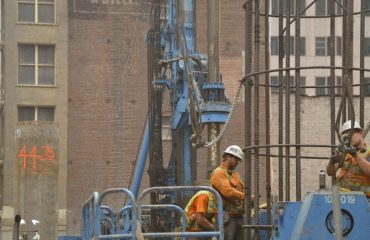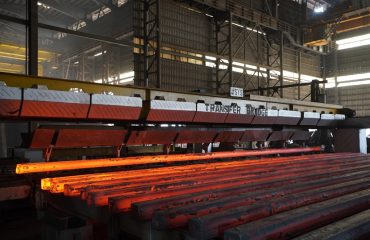Steel, a cornerstone of modern construction and engineering, continues to demonstrate its remarkable versatility across a vast array of applications. Its strength, durability, and cost-effectiveness make it an ideal material for tackling complex engineering challenges. This blog post delves into several compelling case studies that highlight the innovative and impactful use of steel in diverse projects.
1. Skyscraper Construction: Reaching New Heights with Steel
The construction of skyscrapers presents unique engineering hurdles, demanding materials that can withstand immense pressure and seismic activity. Steel’s high strength-to-weight ratio makes it the preferred choice for building towering structures. Consider the Burj Khalifa, the world’s tallest building. Its intricate steel framework, meticulously designed and constructed, allows for its remarkable height and stability. The steel structure not only supports the building’s weight but also provides flexibility, enabling it to withstand strong winds and earthquakes. The use of high-strength steel grades and advanced welding techniques were crucial in achieving this feat of engineering. This case study showcases steel’s capacity to push the boundaries of architectural design and engineering possibilities.
2. Bridge Engineering: Spanning Gaps with Steel’s Strength
Bridges, vital links in transportation infrastructure, often require materials capable of withstanding significant stress and fatigue. Steel’s inherent strength and weldability make it a perfect material for constructing bridges of various types, from simple beam bridges to complex suspension bridges. The Golden Gate Bridge, a globally recognized icon, demonstrates the impressive capabilities of steel in bridge engineering. Its iconic suspension design utilizes massive steel cables and a robust steel deck structure to support the immense weight and traffic load. The bridge’s longevity and resilience are a testament to the durability and reliability of steel in demanding environments. Furthermore, advancements in steel alloys and corrosion protection techniques have extended the lifespan of steel bridges significantly, reducing maintenance costs and ensuring long-term structural integrity.
3. Infrastructure Projects: Steel’s Role in Sustainable Development
Steel plays a crucial role in building sustainable infrastructure. From railway lines and pipelines to large-scale industrial plants, steel’s versatility and recyclability contribute to environmentally conscious construction practices. Consider the high-speed rail networks being developed worldwide. Steel’s strength and durability are essential for building tracks that can withstand the high speeds and heavy loads of these trains. Moreover, the recyclability of steel reduces the environmental impact of construction and demolition. The use of recycled steel in infrastructure projects minimizes the demand for virgin materials, lowering carbon emissions and promoting resource efficiency. This exemplifies steel’s contribution to sustainable development goals.
4. Automotive Industry: Steel’s Contribution to Vehicle Safety
The automotive industry heavily relies on steel for its strength, formability, and cost-effectiveness. Modern vehicles incorporate advanced high-strength steel (AHSS) alloys to enhance safety and fuel efficiency. AHSS allows for the creation of lighter, yet stronger, vehicle bodies, improving fuel economy and reducing emissions. The use of tailored blanks, which combine different steel grades in a single component, further optimizes vehicle weight and performance. In the event of a collision, the strategically placed AHSS components absorb and dissipate impact energy, protecting passengers. This exemplifies steel’s pivotal role in enhancing vehicle safety and environmental performance.
5. Offshore Wind Energy: Steel’s Role in Renewable Energy Infrastructure
The global transition towards renewable energy sources has spurred significant advancements in offshore wind turbine technology. Steel plays a critical role in constructing the massive foundations and support structures for these turbines. The offshore environment presents harsh conditions, including strong winds, waves, and corrosion. Specialized steel alloys, designed to withstand these challenging conditions, are crucial for ensuring the long-term reliability and safety of offshore wind farms. The construction of these massive structures requires advanced engineering and fabrication techniques, showcasing steel’s capacity to support the growth of sustainable energy infrastructure. The durability and strength of steel contribute to the cost-effectiveness and longevity of offshore wind farms, making them a viable and sustainable energy source.
These case studies merely scratch the surface of steel’s vast applications. Its adaptability, strength, and sustainability make it a crucial material for addressing global challenges in construction, infrastructure, and renewable energy. The continuous development of new steel alloys and fabrication techniques further expands its potential, ensuring its continued importance in shaping the future.
SEO Tags:
Steel applications, Steel case studies, Engineering case studies, Construction materials, Sustainable infrastructure




